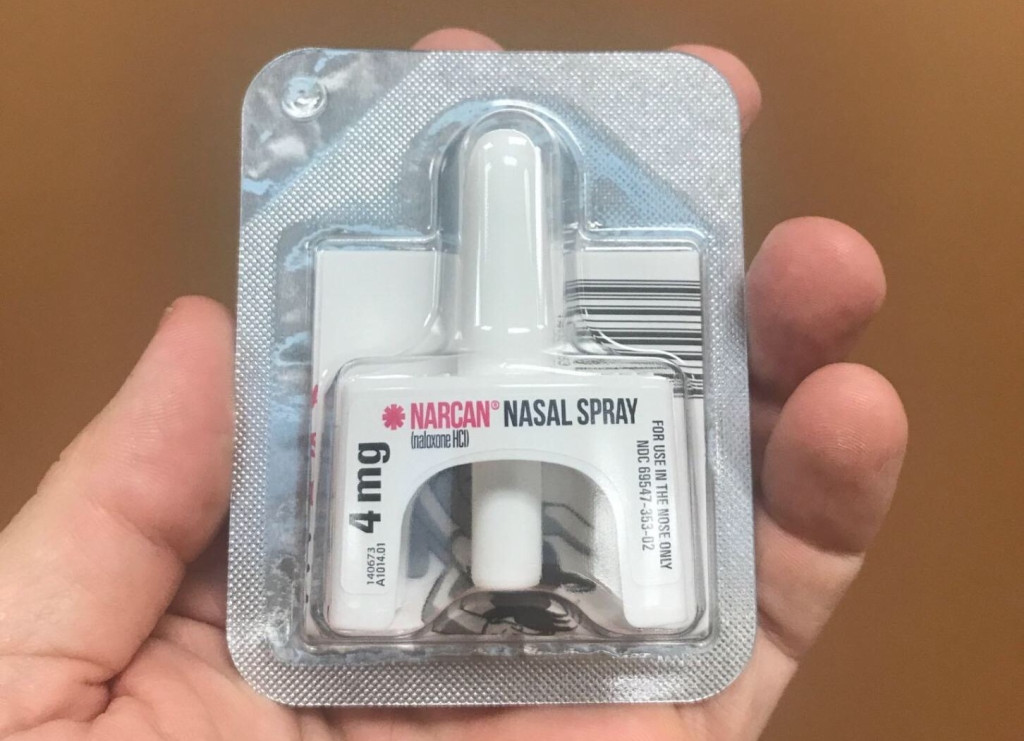
26 May Southern California police, deputies being issued antidote for opioid overdoses – Press Enterprise
Amid a nationwide opioid emergency declared by the president and a decade-long rise in overdose deaths, the Riverside County Sheriff’s Department is joining other Southern California law enforcement agencies in arming its deputies with an antidote for abuse.
Opioids include heroin and prescription pain medications such as fentanyl. While opioids create a feeling of euphoria, an overdose can slow a person’s heart rate and can cause breathing trouble, loss of consciousness or coma. The antidote, known as Naloxone or a brand name Narcan, can reverse and block the effects of opioids and can quickly restore normal respiration.
Law enforcement officers are sometimes the first to arrive at a medical emergency. Already this month, the Riverside County Sheriff’s Department said, deputies revived an unresponsive woman in La Quinta who had overdosed on heroin and methamphetamine.
“Recognizing the importance of providing rapid aid to individuals in an opioid-induced medical emergency, including department members inadvertently exposed to harmful agents such as fentanyl, can prove beneficial when performing life-saving measures,” the Sheriff’s Department said in a statement.
Nationwide, almost 48,000 people died from an overdose involving a prescription drug or illicit opioid in 2017, continuing a two-decade rise in overdose deaths, the Centers for Disease Control and Prevention said.
President Donald Trump declared opioid abuse a national health emergency that August and provided money to states to combat it.
In California, there were 2,196 opioid-related overdose deaths — 5.23 per 100,00 population — in 2017, the most recent year for which such data is available, the state Department of Public Health said. There were 4.83 such deaths per 100,000 in 2011. Among those, heroin-related deaths increased 89%, and fentanyl-related deaths increased 320%, from 2011 to 2017.
In June 2018, state Public Health Officer Karen Smith issued a standing order that allows law enforcement, health agencies and their employees to administer Naloxone without the approval of a physician. State law eliminates civil or criminal liability for those who administer the doses.
Many Southern California law enforcement agencies are already saving lives with the antidote, which can be administered as a nasal spray or by injection.
“We do carry Naloxone and have had several successful deployments,” Anaheim police Sgt. Daron Wyatt said.
The Los Angeles County Sheriff’s Department began distributing Narcan to patrol deputies in June 2017, two months after eight people overdosed in a 72-hour period in the Santa Clarita Valley. In February 2018, deputies who found a man unresponsive with a needle in his arm at a park in Lomita administered Narcan to him, and he began to breathe normally.
“We have an opportunity to give them a second chance, so let’s do it,” LA County Sheriff’s Cmdr. Judy Gerhardt said when the department began using Narcan.
In Long Beach, Naloxone kits have been deployed to police officers as part of the Overdose Prevention Pilot Program, which was created in November, police spokeswoman Jennifer De Prez said. Participating officers include those in the Mental Evaluation Team, Quality of Life Details, Bike Details, Drug Investigation Section, Property Section and K-9 Unit.
Los Angeles Police Department officers who seek out the training carry Narcan, a spokesperson said.
Some police officers in San Bernardino have obtained Narcan to use in case they are exposed to opioids, but the city department has not issued the antidote to officers, Lt. Adam Affrunti said.
Sheriff’s deputies in San Bernardino County and officers in the city of Riverside do not carry the antidote, department spokesmen said.

In the coming months, Riverside County plans to equip patrol deputies at the rank of sergeant and below, court deputies, community service officers and members of special investigation and enforcement teams, among others, with a nasal spray version of the antidote, Deputy Michael Vasquez said.
There were 140 opioid overdose deaths in Riverside County in 2017, the most recent year for which such data is available, the California Department of Public Health said. Riverside County’s opioid death rate per 100,000 population, 5.7, was lower than in Orange County (7.5) and higher than Los Angeles County (4.0) and San Bernardino County (2.7).
Overdose deaths of all kinds in Riverside County increased from 230 in 2008 to 430 in 2017, according to data provided by the county. That represented a 63 percent increase — from 11 to 18 — in the deaths per 100,000 population. In that span, there was a 48 percent increase in heroin overdose deaths.
The number of people in Riverside County seeking treatment for opioid use began to rise steadily in 2013, according to Medi-Cal data on claims for three common treatments: Buprenorphine, Methadone and Naloxone. In the last three months of 2013, Medi-Cal received just over 500 claims; by the end of 2017, that number had risen to more than 1,900.
While Methadone programs are the most common treatments, Naloxone is growing fastest in popularity, from fewer than 20 claims per quarter before 2017 to more than 160 in the third quarter of 2018.
There has been some resistance to using the antidote.
Paul LePage, when he was governor of Maine in 2016, vetoed legislation — later overridden by the legislature — that would have made Naloxone more widely available.
“Naloxone does not truly save lives; it merely extends them until the next overdose,” LePage wrote in his rejection.
Cameron Kaiser, the Riverside County health officer, acknowledged that the easy availability of Naloxone could reduce the fear of opioid overdoses by addicts.
“On the other hand, if I want them off opioids, they have to be alive to do it,” Kaiser said in a statement from the Riverside County Department of Public Health. “I don’t ever want people to think that opioid abuse is safe, but Naloxone saves more lives the more it’s available, and hopefully someone whose life was saved by it will consider why they needed it in the first place.”
Staff Writer Nikie Johnson contributed to this report.
[ad_2]
Source link



No Comments